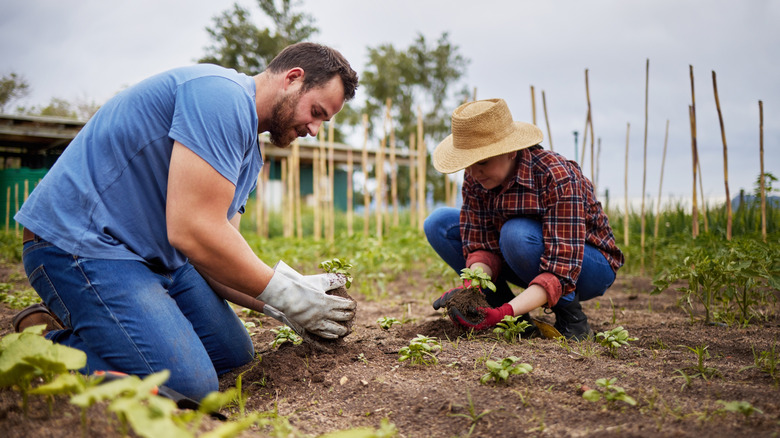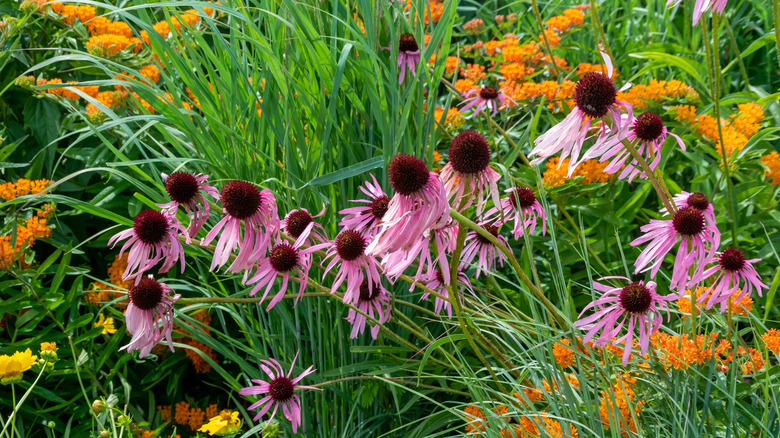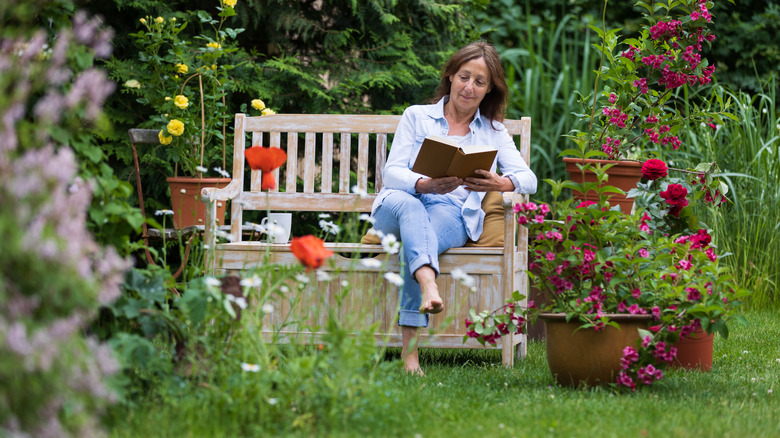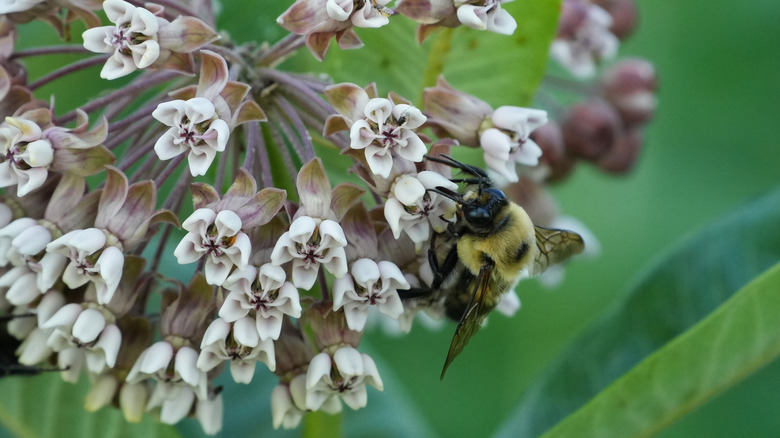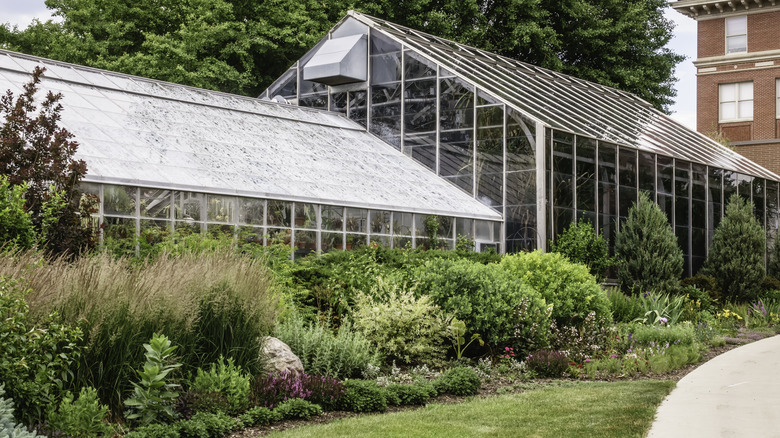Want To Get Into Native Gardening? Use These Resources To Get Started
Maybe you had a particularly pleasant afternoon watching bees forage from your squash flowers, or someone gave you a pot of mountain mint with the advice that it's a great native plant. You've come to see that insect and plant interactions are as fascinating as they are critical to the health of our ecosystems — and now you want to know how you can get into native gardening. There are many resources you can turn to for help (depending on your location and preferences), including local chapters of native plant societies, non-profits, and books that specialize in the native flora of your region.
If you want to start learning more about native gardening and how to turn your garden into a certified wildlife habitat, you'll need to know which plants originate in your area and which are well-adapted to the growing conditions in your yard. Getting into native gardening can take many different routes — the following recommendations offer options for different learning styles.
Native plant-focused non-profits
Among the best resources to get started with growing native plants are non-profits with a mission to promote native plant gardening. Homegrown National Park, for instance, helps inspire growers to add beneficial species to their yards with a country-wide map of native gardens. Another native plant-focused non-profit, Wild Ones, provides multiple ways for you to learn and explore, including local chapters, online webinars, and native habitat certification. They also offer native plant designs for numerous cities around the U.S.
Native plant books
Of course, not all resources have to be online. Some excellent sources for learning about native plants come in book form. And since the best native plants to grow if you live in the mountain west region will be quite different from the ones to grow if you live in the southeast, you'll need to make sure you get guidance for your region. While introductory books on native gardening can help you get motivated to plant and teach garden design tips, books that specialize in your region's native flora will help you decide which plants to grow.
Arboretums
For those interested in getting started with native gardening, arboretums can be a wonderful resource as well. Some arboretums are collections of trees within botanical gardens or on university campuses, but many are independent organizations that serve as living museums of plant life and educational centers. One example is the Crosby Arboretum, a stunning Mississippi garden with 700 acres and thriving wildlife. Many arboretums provide native plant resources on their websites and hold annual or biennial plant sales. You can learn from arboretum staff who offer guidance on local plant species that will do best in your yard.
Native plant societies
Since native gardening, by nature, requires a local focus, native plant societies provide a wealth of resources for newbies to learn about plants in the wild and which of them will grow best in their own backyard. Gardeners should find their state native plant societies and inquire about local chapters to join events such as garden visits, planting projects, and other field trips that allow them the chance to meet up with and learn from fellow native plant enthusiasts.
Pollinator-focused non profits
In addition to non-profits dedicated to promoting native gardening, those whose missions are to protect pollinators can also be excellent resources to start with. These include the Xerces Society and Pollinator Partnership. Both of these pollinator-focused non-profits offer regional guides to help you learn which trees, shrubs, and perennials are native to your area and may grow well in your yard.
Botanical gardens
Botanical gardens provide inspiration through their landscape designs, making them a reliable resource for native gardeners. Many, such as the Brooklyn Botanic Garden and Longwood Gardens, provide possibilities to see large plantings of native plants. Some, like the Missouri Botanical Garden, also offer classes or programs to learn how to grow natives. To learn from inspirational gardens in your area, all you have to do is visit and inquire about tours.
Native plant nurseries
Native plant nurseries specialize in locally adapted plants, so if you have one in your area, it is a valuable resource for getting into native gardening. By visiting these nurseries, you can learn which trees, shrubs, and perennials will grow best in your yard. You'll also be able to pick up a selection of native plants that will turn your yard into a safe haven for fireflies and pollinators like bees and butterflies. And if you're just getting started, you can ask for guidance from the staff (who are likely experts with firsthand experience with these plants).
University cooperative extensions
University cooperative extensions are outreach programs meant to help the residents of their local communities. In addition to providing online educational materials to learn from, they maintain office hours for in-person visits. A cooperative extension can be one of the best resources for those getting started in native gardening. Some of them offer online guides to growing or propagating native plants. And since removing invasives may be part of your approach to creating a native plant landscape, master gardeners at university extensions can also help you determine if the tree in your new backyard is invasive.
